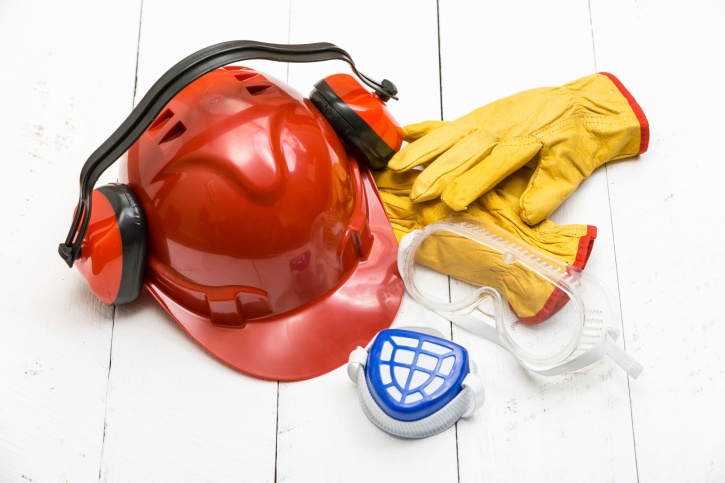 It was the best of facilities. It was the worst of facilities.
It was the best of facilities. It was the worst of facilities.
Most corporations have more rigorous workplace safety standards than are required to maintain OSHA compliance. But, what happens when these standards are left to the management teams of various facilities to enforce on their own?
It’s a familiar story to many safety engineers and other industrial safety professionals. Large businesses, especially multi-national corporations, have many production facilities and warehouses. Often, the workplace safety protocols and guidelines that come from corporate headquarters are interpreted and implemented in different ways by different facility managers.
To explain the way differing workplace safety standards affect your workers and pose threats to your employer, here’s the story of Bill.
Bill’s Story, Part 1: Flagship Facility Safety Standards
Meet Bill, a Production Manager for XYZ Corp., a fictional multi-national chemical supply company. While Bill isn’t a real person, his story is more common than many corporate managers and facility supervisors would like to think.
Bill began his career at XYZ’s flagship production facility. This facility is a source of pride for XYZ’s executives, who frequently visit with major shareholders to show off the company’s state-of-the-art technology. The facility fosters a comprehensive safety culture and thoroughly enforces the company’s corporate safety guidelines. This facility has top-notch safety equipment including sturdy gangways and makes sure workers are protected by safety cages when they need to access truck hatches to move chemicals from transport vehicles to the production area.
Additionally, the facility’s staff receives regular safety training and a safety coach regularly conducts safety audits of the facility. New hires undergo extensive instruction into XYZ’s safety policies and the reasons behind them before they are allowed to work on the production floor. Because Bill is proud to work for a company so dedicated to its employees’ safety, he works hard and is rewarded with a promotion that requires him to transfer to another facility.
Bill’s Story, Part 2: How Corporate Acquisition Impacts Workplace Safety Standards
The facility Bill has been transferred to has recently come under XYZ’s ownership through a corporate acquisition. Unfortunately, the acquired company did not implement or enforce its corporate safety standards as effectively as XYZ. The facility’s workers do not receive regular safety training and frequently engage in high-risk behavior that could lead to slips, trips and falls or hazardous chemical exposure.
Additionally, the facility’s manager is close to retirement and hopes that cutting corners on safety equipment investment might lead to a larger bonus check. Everywhere Bill looks in the facility he sees safety hazards, such as outdated safety platforms, and he worries that the workers he supervises could have accidents, resulting in serious injury or even death.
Bill knows his facility needs a stronger safety culture, better safety training and higher quality fall prevention equipment. Bill brings his concerns to the facility manager, but is unable to convince him to enact the changes necessary to keep the facility’s workers safe. Bill is left with two choices no Production Manager should ever have to face: go over his boss’s head to corporate headquarters or allow the workers he supervises to continue to work in unsafe conditions, knowing that, if an accident were to happen, he would likely receive the blame.
Poor Safety Conditions Threaten Corporate Profits
While Bill’s story is fictional, similar stories happen too frequently. Unfortunately, the possibility of a disillusioned Production Manager is just the beginning of the risks corporations are exposed to when multiple facilities enforce workplace safety standards in different ways.
An accident leading to serious injury or death might result in OSHA compliance fines. If a facility is found not to have taken every reasonable action to protect its workers, there is a risk of possible criminal prosecution. Even if the corporation is able to avoid OSHA fines and criminal prosecution by taking some action, there is still a substantial risk of costly civil litigation, not to mention the inevitable public relations nightmares that accompany worker injuries.
Reduce Risks By Implementing A Safety Culture Across All Facilities
Most corporations have the best intentions when it comes to keeping their workers safe. The best way to reduce the risk of workers becoming injured or killed while on the job is to make sure that all corporate facilities execute corporate safety policy with the same rigor. When a safety culture is instilled and prioritized, facility managers feel empowered to take the necessary actions, such as conducting regular safety audits and investing in the highest quality safety equipment, to keep their workers as safe as possible.
For corporations looking to protect their workers from injury and death, safer workplaces are within reach, as long as upper management, middle management and production workers all get on the same page.
Need to keep your workplace moving efficiently while meeting corporate and OSHA compliance? Click below to download this industry guide from Carbis Solutions to discover the secrets to a safer – and more efficient – work site.



